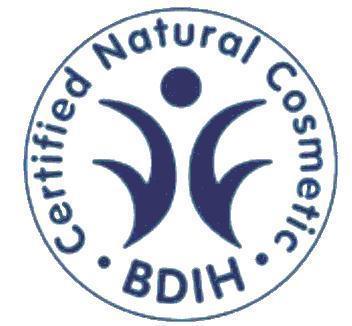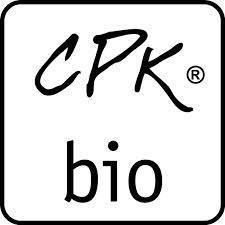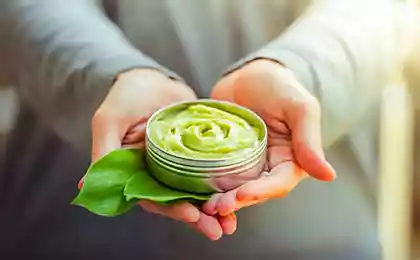729
Organic cosmetics – what you SHOULD know
What is organic cosmetics? Fashion marketing course or a special philosophy of creating cosmetics? Than organic better than conventional? What guarantee of organic origin? And in General, how to identify truly organic, a product according to the label?
The term "Organic" is borrowed from the food industry where several decades ago there was a natural products labeled "bio", "eco" or "organic". Organic foods are certified products whose production does not use chemical plant protection products, mineral fertilizers synthetic origin, GMO-free, any artificial colors, flavors or preservatives.

Organic cosmetics is not only a trend in the beauty industry, its use has become a kind of philosophy, whose supporters maintain a healthy lifestyle and believe that natural should be everything from product to packaging.
Organic cosmetics should be distinguished from the natural, which only contains ingredients of natural origin.Organic cosmetics can be called only when passed the appropriate certification.
It should be noted that in the field of food already defined standards for organic agriculture at the state level, however, in the field of cosmetics, they have not yet been developed. To date there is no consensus among specialists as well as a global standard regarding which cosmetics can be considered organic.
The organs of voluntary certification of similar products exist in many countries: England (Soil Association), France (Cosmebio), Germany (BDIH, Natrue). In this case, each of them has its own set of rules and standards. Those manufacturers whose products have passed the checking procedure, receive a certificate and have the right to put on the packaging the appropriate sign. There are more than 15 rules regarding the production of organic cosmetics, which are fundamentally similar but differ somewhat. The variety of logos and marks "Organic" can lead to misunderstanding among consumers.
THE PRINCIPLES OF CREATING ORGANIC COSMETICS
Each certification body, which controls cosmetics, creates certain standards that must be met by the product and the manufacturer in order to be certified.
In General, according to the production standards of organic cosmetics:
ORGANIC COSMETICS – NATURAL COSMETICS?
Organic cosmetic products are oil-based may be 100% organic and do not require additional preservatives. Sometimes, there is a mild antioxidant tocopherol (vitamin E), which is allowed in organic food industry. However, the cosmetics are water-based and water-oil emulsions (creams, lotions, shampoos, conditioners) requires the use of certain preservatives to ensure safe use throughout the shelf life. In addition, such cosmetic forms should contain emulsifiers to mix oil and water and to stop the separation of the mixture.
And even in cosmetics under the sign "organic" is allowed a certain maximum percentage of synthetic components of the allowed list, it is mostly preservatives. The latter are selected in such a way that is suitable for sensitive and children's skin: benzoic acid and its salts and esters, benzyl alcohol, salicylic acid and its salts, sorbic acid and its salts. These preservatives are soft and safe, themselves chemical compounds are found in nature (for example, sorbic acid is contained in fruits of mountain ash). But for cosmetic purposes these preservatives, because of their inability to naturally produce the necessary quality and quantity, are synthesized in the laboratory.
Sometimes ingredients that have a natural preservative effect, can be used in a formula, such as alcohol, some essential oils, antioxidants, silver. But if these substances are not effective, then it can be used a preservative that meets strict Toxicological and environmental requirements. The list of additives in certified organic cosmetics is very limited. And they allowed only minimal impact on the environment and meet requirements for no harmful effects on human health.
THE DICTIONARY CONNOISSEUR ORGANIC COSMETICS
Natural ingredient is a chemically unmodified natural substance such as vegetable oil or aqueous extract. Any plant, animal or mineral product, directly of agricultural origin, which is not recyclable or produced by physical processes (such as broth, pressing).
Ingredient of natural origin (or another — close to natural ingredient) — all natural ingredients (petrochemicals as the source are excluded), which are amenable to chemical processing, that is derived from natural sources and through chemical transformations, which essentially resemble the physiological (e.g., formation of partial triglyceride in fat digestion).
Certified organic ingredient — any ingredient of plant or animal origin that meets the requirements of organic production.
Natural-identical ingredient – an ingredient which is obtained by chemical synthesis, but the chemical formula of compounds found in nature (such as benzyl alcohol found in essential oils).
BASIC STANDARDS OF ORGANIC COSMETIC PRODUCTS IN FORCE IN THE TERRITORY OF THE EUROPEAN UNION
Ecocert
(France, 2012)

History and scope of use: it was founded in 1991 in France, Ecocert certifies food, cosmetics, detergents, textiles, etc. Conducts inspections in over 80 countries. Certifies also according to the standard COSMOS Natural and COSMOS Organic.
Features of requirements: it should be noted the percentage of organic ingredients on the labels. A minimum of 95% of all ingredients must be of natural origin. Allows up to 5% of synthetic ingredients from the allowed list. For organic cosmetics (ORGANIC): a Minimum of 10% of the total ingredients (by weight, including water) must be organic. A minimum of 95% of plant ingredients are organic. For natural (NATURAL): 5% of the total ingredients (by weight, including water) must be organic. At least 50% of plant ingredients are organic.
Cosmebio
(France, 2003)

History and usage: the official French Association of environmental and natural cosmetics, which adheres to strict standards of production, since 2003 under the control of the organization Ecocert. Certifies also according to the standard COSMOS Natural and COSMOS Organic.
Features of requirements: it should be noted the percentage of organic ingredients on the labels. A minimum of 95% of all ingredients must be of natural origin. Allows up to 5% of synthetic ingredients from the allowed list. For organic cosmetics (BIO): a Minimum of 10% of the total ingredients (by weight, including water) must be organic. A minimum of 95% of plant ingredients are organic. For eco-friendly (ECO): 5% of the total ingredients (by weight, including water) must be organic. At least 50% of plant ingredients are organic.
SEA
(Italy, 2009)

History and scope of use: ethical and environmental certification Institute (ICEA – Ethical and Environmental Certification) to inspect the company, respecting the environment, the dignity of workers and social rights. Certifies food, cosmetics, tourism, textiles, building products, fair trade etc.
Features requirements: is the standard for eco-friendly products (eco-friendly cosmetics). Includes the use of organic ingredients when possible (in case of availability of the required quantity of raw materials of required quality) and has no limitations of the minimum content of organic components. The standard lists the impressive list (in 200 pages) of ingredients that are prohibited in vehicles that have been certified by ICEA.
Soil Association
(UK, 2002)

History and scope of use: the Association was founded in 1946 by a group of farmers, scientists and nutritionists. Acts by charitable contributions and is a leading certification body in the UK. Certifies food, cosmetics, textiles, aquaculture, etc.
Features of requirements: it should be noted the percentage of organic ingredients on the labels. For cosmetic products labelled as "organic" (Organic): a minimum of 95% organic ingredients (excluding water). In this case, the package is allowed to call a product organic (E.g., Organic Shampoo/ Organic shampoo). For cosmetics, marking as "done by x% organic ingredients" (Made with x% organic ingredients): at least 70% organic ingredients (excluding water).
BDIH
(Germany, 1995)

History and scope of use: the Federation of German manufacturers and distributors of pharmaceuticals, goods for healthy lifestyle, dietary supplements, personal care and health products, founded in 1956. Created the first global standard in the industry of organic cosmetics.
Features requirements: in the field of cosmetics BDIH calls himself a standard of natural cosmetics and sets the product status to "Controlled natural cosmetics". Requires manufacturers to use organic ingredients when possible (in case of availability of the required quantity of raw materials of required quality). Therefore, there is a likelihood that the product may contain 0% organic ingredients and be certified by the BDIH. Specifies the list of ingredients allowed to use.
COSMOS
(European Union, 2011)
History and scope of use: COSMOS is an international harmonized standard for organic cosmetics, created a working group of 5 accreditation bodies (Soil Association, BDIH, Cosmebio, Ecocert, ICEA). At the moment the standard is gaining popularity.
Features requirements: for cosmetic products with markirovki organic (Organic): at least 20% of the total ingredients must be organic (at least 10% off cosmetics with minerals and mineral origin). At least 95 percent physically processed agro-ingredients must be organic. The program of gradual transition. After 36 months of the transition remaining inorganic part must be of organic origin (if in the right quantity and the right quality). 30% of chemically processed agro-ingredients must be of organic origin. You need to specify the percentage of ingredients of organic origin. Allows to call the label "organic" (e.g. organic shampoo) if it contains at least 95% organic ingredients, if less, then it is permissible to specify "organic ingredient" (e.g. shampoo with organic jojoba oil). For cosmetics, tokenized as a "Natural (Natural)": has no requirements on the minimum content of organic ingredients.
NaTrue
(European Union, 2012)

History and scope of use: Natrue is an international non-profit standard that was founded by German manufacturers-pioneers in cosmetic products (Dr Hauschka, Weleda, Primavera, Lavera).
Features requirements: involved a three-tier system: For cosmetic products, the labeling as "organic" (Organic cosmetics): minimum 95% of ingredients are of natural and of natural origin must be organic. For cosmetic products, the labeling as "natural with organic portion" (Natural cosmetics with organic portion): a minimum of 70% of ingredients are of natural and of natural origin must be organic. For cosmetic products, the labeling as "natural" (Natural cosmetics): has no requirements on the minimum content of organic ingredients. For each group of cosmetic products (e.g., emulsions, products for hair care, soap, cosmetics) are determined by different criteria the percentage of natural ingredients close to natural and identical to natural with the three-tier system.
CPK bio
(Czech Republic, 2007)

History and area of usage: Czech standard of organic cosmetics, which are based on the standards of the French Ecocert. The cost of certification bio Cpk more affordable for Czech producers than foreign certification.
Features requirements: at Least 10% ingredients of organic origin.
WHAT TO CHOOSE
The fact that an important component of a healthy lifestyle is not only a natural Wellness, nutrition, physical activity, but also natural cosmetics is not in doubt. The skin absorbs up to 60% of substances which in contact with her, then these substances can enter the bloodstream and after only 26 seconds to be in all vital organs. Of the 10 500 ingredients used in the mass cosmetics, only about 11% is considered completely safe.
Take care of yourself, your skin, health and beauty of your hair choose organic cosmetics. Pay attention to the labeling of products – look for the logo confirming the organic status of the product. Now, there are many pseudo-organic products that can enter the buyer confusion: figuring the word Organic in the brand name mark about the content of an organic ingredient together with banned in organics artificial additives.
Of course, organic makeup is more expensive than conventional chemical, but it's a justifiable difference. For example, artificial flavoring is worth a penny, and essential oils valued at all times. Organic means more concentrated and universal. Natural cosmetics will still be cheaper organic, but in this case you should carefully check the composition. Try to make some cosmetics (e.g., face masks) at home from fresh ingredients — this can be a very creative and enjoyable.
Do not forget that beauty starts from the inside. If Your daily nutrition is rich in vitamins, minerals, antioxidants and unsaturated fats omega-3, you will need a minimum of cosmetic products and procedures. published
P. S. And remember, only by changing their consumption — together we change the world! ©
Join us in Facebook , Vkontakte, Odnoklassniki
Source: natur-boutique.ua/blog/%D0%BE%D1%80%D0%B3%D0%B0%D0%BD%D0%B8%D1%87%D0%B5%D1%81%D0%BA%D0%B0%D1%8F-%D0%BA%D0%BE%D1%81%D0%BC%D0%B5%D1%82%D0%B8%D0%BA%D0%B0-%D0%B3%D0%B0%D1%80%D0%B0%D0%BD%D1%82%D0%B8%D1%8F-%D0%BD%D0%B0/
The term "Organic" is borrowed from the food industry where several decades ago there was a natural products labeled "bio", "eco" or "organic". Organic foods are certified products whose production does not use chemical plant protection products, mineral fertilizers synthetic origin, GMO-free, any artificial colors, flavors or preservatives.

Organic cosmetics is not only a trend in the beauty industry, its use has become a kind of philosophy, whose supporters maintain a healthy lifestyle and believe that natural should be everything from product to packaging.
Organic cosmetics should be distinguished from the natural, which only contains ingredients of natural origin.Organic cosmetics can be called only when passed the appropriate certification.
It should be noted that in the field of food already defined standards for organic agriculture at the state level, however, in the field of cosmetics, they have not yet been developed. To date there is no consensus among specialists as well as a global standard regarding which cosmetics can be considered organic.
The organs of voluntary certification of similar products exist in many countries: England (Soil Association), France (Cosmebio), Germany (BDIH, Natrue). In this case, each of them has its own set of rules and standards. Those manufacturers whose products have passed the checking procedure, receive a certificate and have the right to put on the packaging the appropriate sign. There are more than 15 rules regarding the production of organic cosmetics, which are fundamentally similar but differ somewhat. The variety of logos and marks "Organic" can lead to misunderstanding among consumers.
THE PRINCIPLES OF CREATING ORGANIC COSMETICS
Each certification body, which controls cosmetics, creates certain standards that must be met by the product and the manufacturer in order to be certified.
In General, according to the production standards of organic cosmetics:
- Never use ingredients derived during the processing of oil (propylene glycol, paraffin, mineral oil).
- Banned synthetic colors, flavors, antioxidants, softeners, fats and oils, silicones and other synthetic ingredients that may to naturally.
- It is forbidden to use genetically modified ingredients and nano-technology.
- Prohibits the testing of the final product on animals. Some of the standards established a ban on testing of cosmetic raw materials in animals.
- Do not use ingredients derived from dead animals (e.g. badger fat, spermaceti). Allowed certain raw materials of animal origin, which refers to the natural secretions of animals (beeswax, honey, milk, lactose, lanolin, propolis, Royal jelly, shellac, etc.)
- The final product and its ingredients are forbidden to handle ionizing radiation.
- The collection and use of vegetable raw materials must not harm the environment. Not allowed to use plant species that are under protection.
- The minimum percentage of organic ingredients.
- The maximum permitted content of synthetic components.
- The list of permitted and prohibited ingredients.
- The list of permitted and prohibited methods of processing ingredients.
- Path recalculation of the percentage of water in the composition.
ORGANIC COSMETICS – NATURAL COSMETICS?
Organic cosmetic products are oil-based may be 100% organic and do not require additional preservatives. Sometimes, there is a mild antioxidant tocopherol (vitamin E), which is allowed in organic food industry. However, the cosmetics are water-based and water-oil emulsions (creams, lotions, shampoos, conditioners) requires the use of certain preservatives to ensure safe use throughout the shelf life. In addition, such cosmetic forms should contain emulsifiers to mix oil and water and to stop the separation of the mixture.
And even in cosmetics under the sign "organic" is allowed a certain maximum percentage of synthetic components of the allowed list, it is mostly preservatives. The latter are selected in such a way that is suitable for sensitive and children's skin: benzoic acid and its salts and esters, benzyl alcohol, salicylic acid and its salts, sorbic acid and its salts. These preservatives are soft and safe, themselves chemical compounds are found in nature (for example, sorbic acid is contained in fruits of mountain ash). But for cosmetic purposes these preservatives, because of their inability to naturally produce the necessary quality and quantity, are synthesized in the laboratory.
Sometimes ingredients that have a natural preservative effect, can be used in a formula, such as alcohol, some essential oils, antioxidants, silver. But if these substances are not effective, then it can be used a preservative that meets strict Toxicological and environmental requirements. The list of additives in certified organic cosmetics is very limited. And they allowed only minimal impact on the environment and meet requirements for no harmful effects on human health.
THE DICTIONARY CONNOISSEUR ORGANIC COSMETICS
Natural ingredient is a chemically unmodified natural substance such as vegetable oil or aqueous extract. Any plant, animal or mineral product, directly of agricultural origin, which is not recyclable or produced by physical processes (such as broth, pressing).
Ingredient of natural origin (or another — close to natural ingredient) — all natural ingredients (petrochemicals as the source are excluded), which are amenable to chemical processing, that is derived from natural sources and through chemical transformations, which essentially resemble the physiological (e.g., formation of partial triglyceride in fat digestion).
Certified organic ingredient — any ingredient of plant or animal origin that meets the requirements of organic production.
Natural-identical ingredient – an ingredient which is obtained by chemical synthesis, but the chemical formula of compounds found in nature (such as benzyl alcohol found in essential oils).
BASIC STANDARDS OF ORGANIC COSMETIC PRODUCTS IN FORCE IN THE TERRITORY OF THE EUROPEAN UNION
Ecocert
(France, 2012)

History and scope of use: it was founded in 1991 in France, Ecocert certifies food, cosmetics, detergents, textiles, etc. Conducts inspections in over 80 countries. Certifies also according to the standard COSMOS Natural and COSMOS Organic.
Features of requirements: it should be noted the percentage of organic ingredients on the labels. A minimum of 95% of all ingredients must be of natural origin. Allows up to 5% of synthetic ingredients from the allowed list. For organic cosmetics (ORGANIC): a Minimum of 10% of the total ingredients (by weight, including water) must be organic. A minimum of 95% of plant ingredients are organic. For natural (NATURAL): 5% of the total ingredients (by weight, including water) must be organic. At least 50% of plant ingredients are organic.
Cosmebio
(France, 2003)

History and usage: the official French Association of environmental and natural cosmetics, which adheres to strict standards of production, since 2003 under the control of the organization Ecocert. Certifies also according to the standard COSMOS Natural and COSMOS Organic.
Features of requirements: it should be noted the percentage of organic ingredients on the labels. A minimum of 95% of all ingredients must be of natural origin. Allows up to 5% of synthetic ingredients from the allowed list. For organic cosmetics (BIO): a Minimum of 10% of the total ingredients (by weight, including water) must be organic. A minimum of 95% of plant ingredients are organic. For eco-friendly (ECO): 5% of the total ingredients (by weight, including water) must be organic. At least 50% of plant ingredients are organic.
SEA
(Italy, 2009)

History and scope of use: ethical and environmental certification Institute (ICEA – Ethical and Environmental Certification) to inspect the company, respecting the environment, the dignity of workers and social rights. Certifies food, cosmetics, tourism, textiles, building products, fair trade etc.
Features requirements: is the standard for eco-friendly products (eco-friendly cosmetics). Includes the use of organic ingredients when possible (in case of availability of the required quantity of raw materials of required quality) and has no limitations of the minimum content of organic components. The standard lists the impressive list (in 200 pages) of ingredients that are prohibited in vehicles that have been certified by ICEA.
Soil Association
(UK, 2002)

History and scope of use: the Association was founded in 1946 by a group of farmers, scientists and nutritionists. Acts by charitable contributions and is a leading certification body in the UK. Certifies food, cosmetics, textiles, aquaculture, etc.
Features of requirements: it should be noted the percentage of organic ingredients on the labels. For cosmetic products labelled as "organic" (Organic): a minimum of 95% organic ingredients (excluding water). In this case, the package is allowed to call a product organic (E.g., Organic Shampoo/ Organic shampoo). For cosmetics, marking as "done by x% organic ingredients" (Made with x% organic ingredients): at least 70% organic ingredients (excluding water).
BDIH
(Germany, 1995)

History and scope of use: the Federation of German manufacturers and distributors of pharmaceuticals, goods for healthy lifestyle, dietary supplements, personal care and health products, founded in 1956. Created the first global standard in the industry of organic cosmetics.
Features requirements: in the field of cosmetics BDIH calls himself a standard of natural cosmetics and sets the product status to "Controlled natural cosmetics". Requires manufacturers to use organic ingredients when possible (in case of availability of the required quantity of raw materials of required quality). Therefore, there is a likelihood that the product may contain 0% organic ingredients and be certified by the BDIH. Specifies the list of ingredients allowed to use.
COSMOS
(European Union, 2011)
History and scope of use: COSMOS is an international harmonized standard for organic cosmetics, created a working group of 5 accreditation bodies (Soil Association, BDIH, Cosmebio, Ecocert, ICEA). At the moment the standard is gaining popularity.
Features requirements: for cosmetic products with markirovki organic (Organic): at least 20% of the total ingredients must be organic (at least 10% off cosmetics with minerals and mineral origin). At least 95 percent physically processed agro-ingredients must be organic. The program of gradual transition. After 36 months of the transition remaining inorganic part must be of organic origin (if in the right quantity and the right quality). 30% of chemically processed agro-ingredients must be of organic origin. You need to specify the percentage of ingredients of organic origin. Allows to call the label "organic" (e.g. organic shampoo) if it contains at least 95% organic ingredients, if less, then it is permissible to specify "organic ingredient" (e.g. shampoo with organic jojoba oil). For cosmetics, tokenized as a "Natural (Natural)": has no requirements on the minimum content of organic ingredients.
NaTrue
(European Union, 2012)

History and scope of use: Natrue is an international non-profit standard that was founded by German manufacturers-pioneers in cosmetic products (Dr Hauschka, Weleda, Primavera, Lavera).
Features requirements: involved a three-tier system: For cosmetic products, the labeling as "organic" (Organic cosmetics): minimum 95% of ingredients are of natural and of natural origin must be organic. For cosmetic products, the labeling as "natural with organic portion" (Natural cosmetics with organic portion): a minimum of 70% of ingredients are of natural and of natural origin must be organic. For cosmetic products, the labeling as "natural" (Natural cosmetics): has no requirements on the minimum content of organic ingredients. For each group of cosmetic products (e.g., emulsions, products for hair care, soap, cosmetics) are determined by different criteria the percentage of natural ingredients close to natural and identical to natural with the three-tier system.
CPK bio
(Czech Republic, 2007)

History and area of usage: Czech standard of organic cosmetics, which are based on the standards of the French Ecocert. The cost of certification bio Cpk more affordable for Czech producers than foreign certification.
Features requirements: at Least 10% ingredients of organic origin.
WHAT TO CHOOSE
The fact that an important component of a healthy lifestyle is not only a natural Wellness, nutrition, physical activity, but also natural cosmetics is not in doubt. The skin absorbs up to 60% of substances which in contact with her, then these substances can enter the bloodstream and after only 26 seconds to be in all vital organs. Of the 10 500 ingredients used in the mass cosmetics, only about 11% is considered completely safe.
Take care of yourself, your skin, health and beauty of your hair choose organic cosmetics. Pay attention to the labeling of products – look for the logo confirming the organic status of the product. Now, there are many pseudo-organic products that can enter the buyer confusion: figuring the word Organic in the brand name mark about the content of an organic ingredient together with banned in organics artificial additives.
Of course, organic makeup is more expensive than conventional chemical, but it's a justifiable difference. For example, artificial flavoring is worth a penny, and essential oils valued at all times. Organic means more concentrated and universal. Natural cosmetics will still be cheaper organic, but in this case you should carefully check the composition. Try to make some cosmetics (e.g., face masks) at home from fresh ingredients — this can be a very creative and enjoyable.
Do not forget that beauty starts from the inside. If Your daily nutrition is rich in vitamins, minerals, antioxidants and unsaturated fats omega-3, you will need a minimum of cosmetic products and procedures. published
P. S. And remember, only by changing their consumption — together we change the world! ©
Join us in Facebook , Vkontakte, Odnoklassniki
Source: natur-boutique.ua/blog/%D0%BE%D1%80%D0%B3%D0%B0%D0%BD%D0%B8%D1%87%D0%B5%D1%81%D0%BA%D0%B0%D1%8F-%D0%BA%D0%BE%D1%81%D0%BC%D0%B5%D1%82%D0%B8%D0%BA%D0%B0-%D0%B3%D0%B0%D1%80%D0%B0%D0%BD%D1%82%D0%B8%D1%8F-%D0%BD%D0%B0/






















